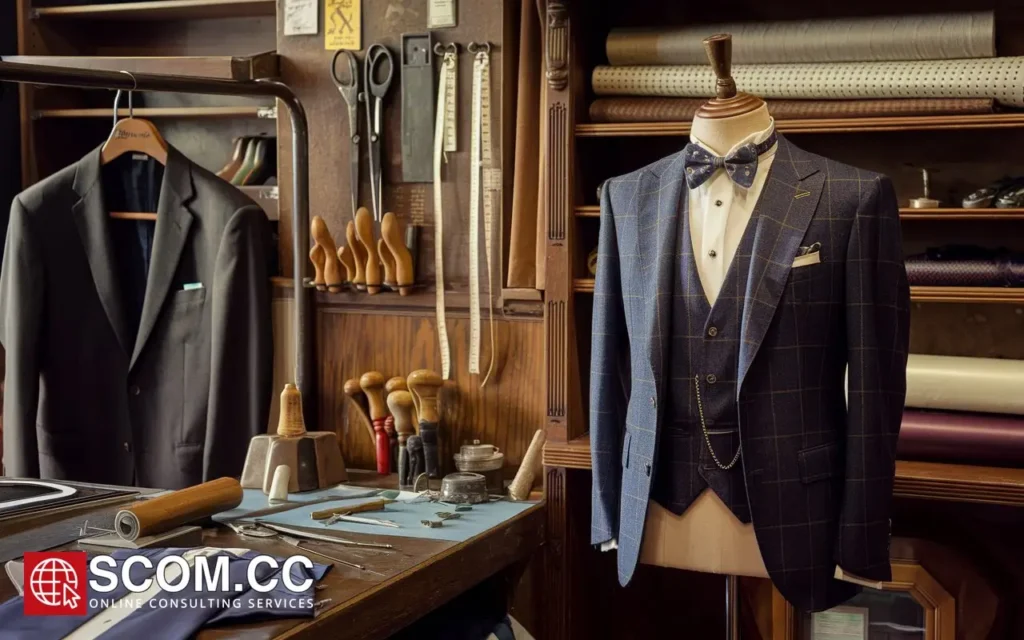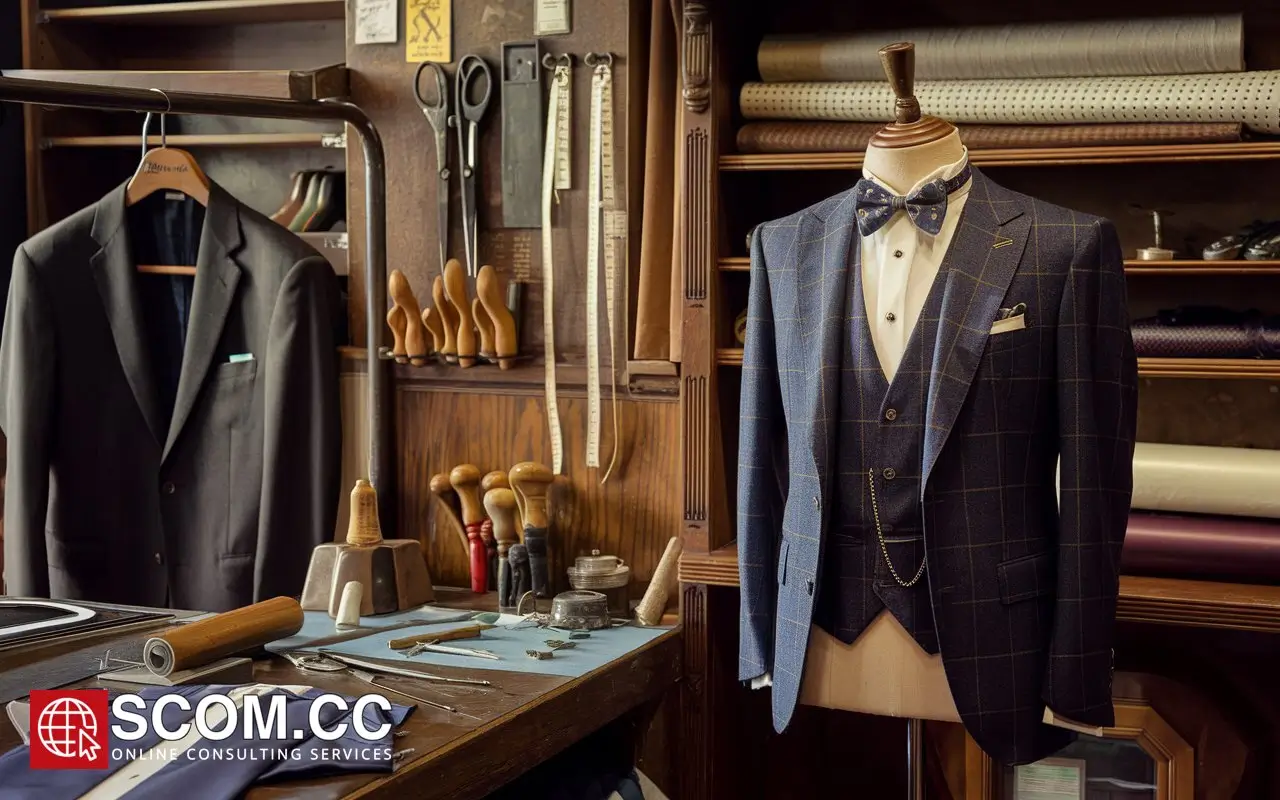What Are the Most Notable Tailoring Milestones in Fashion History?

- What Are the Most Notable Tailoring Milestones in Fashion History?
- The Emergence of Tailoring Techniques in the 18th Century
- The Industrial Revolution: Technological Advancements in Tailoring
- The Early 20th Century: Influence of War and Fashion Icons
- The Late 20th Century to Today: Modern Tailoring Trends
- Conclusion
-
FAQ
- 1. What was the significance of the frock coat in tailoring history?
- 2. How did the Industrial Revolution impact tailoring?
- 3. What role did French fashion play in tailoring during the 18th century?
- 4. What are some key milestones in tailoring from the early 20th century?
- 5. How did technology change tailoring in the late 20th century?
- 6. What is the significance of sustainability in modern tailoring?
- 7. How did the rise of ready-to-wear fashion change the tailoring industry?
What Are the Most Notable Tailoring Milestones in Fashion History?
Introduction to Tailoring Milestones
Tailoring has been a cornerstone of fashion throughout history, marking significant milestones that reflect changes in style, technology, and societal norms. These milestones not only highlight the evolution of tailoring techniques but also illustrate how fashion has adapted to cultural shifts. In this detailed exploration, we will examine the most notable milestones in tailoring history that have shaped the fashion industry as we know it today.
The Emergence of Tailoring Techniques in the 18th Century
The Birth of Modern Tailoring
The 18th century was a pivotal period in the development of tailoring techniques. During this time, the frock coat and waistcoat became prominent in men's fashion, setting the stage for future tailoring practices. English tailors introduced the three-piece suit, comprising the jacket, trousers, and waistcoat, which became a standard in men's formalwear.
Key Milestones:
- 1710s: Introduction of the frock coat which featured a fitted waist and flared skirt, an early precursor to modern suit jackets.
- 1760s: Adoption of bespoke tailoring, where garments were made to measure for individual clients, establishing the foundation of custom tailoring.
The Influence of French Fashion
The influence of French fashion during the 18th century cannot be overstated. French designers introduced elegant fabrics and intricate detailing, which were emulated across Europe. The Louis XVI style emphasized ornate embellishments and luxurious materials, setting new standards for high fashion.
Key Milestones:
- 1770s: The rise of luxurious fabrics like silk and velvet in French fashion, which influenced European tailoring standards.
- 1780s: Introduction of dress coats with elaborate designs, contributing to the development of formal attire.
The Industrial Revolution: Technological Advancements in Tailoring
The Advent of the Sewing Machine
The Industrial Revolution brought about transformative changes in tailoring with the invention of the sewing machine. Elias Howe and Isaac Singer revolutionized garment production by enabling faster and more precise stitching. This innovation marked the beginning of ready-to-wear fashion and expanded the accessibility of tailored garments.
Key Milestones:
- 1851: Isaac Singer's patent for the sewing machine facilitated mass production and standardization of clothing.
- 1870s: Introduction of ready-to-wear garments, making tailored clothing more affordable and widely available.
The Rise of Mass Production
The late 19th century saw the establishment of department stores and mail-order catalogs, which further popularized ready-to-wear fashion. Tailoring adapted to meet the demands of a growing middle class, leading to the production of standardized sizes and styles.
Key Milestones:
- 1890s: Expansion of department stores offering a variety of ready-to-wear options.
- 1900s: The advent of mail-order catalogs, allowing customers to purchase tailored clothing from home.
The Early 20th Century: Influence of War and Fashion Icons
Military Influence and Functional Design
World Wars I and II significantly impacted tailoring, with military uniforms influencing civilian fashion. The incorporation of military-inspired designs such as epaulettes and patch pockets became prevalent in everyday clothing.
Key Milestones:
- 1910s: Introduction of military-style jackets and trousers, reflecting wartime practicality and style.
- 1940s: Adoption of utility clothing and functionality in civilian garments, influenced by wartime fashion.
Fashion Icons and Trendsetting Designs
The early 20th century also saw the emergence of influential fashion designers who reshaped tailoring with innovative designs. Coco Chanel and Christian Dior introduced new silhouettes and styles that became defining features of the era.
Key Milestones:
- 1920s: Coco Chanel popularized the little black dress and tailored suits for women, challenging traditional norms.
- 1947: Christian Dior's New Look introduced a dramatic shift in women's fashion with its emphasis on hourglass silhouettes and luxurious fabrics.
The Late 20th Century to Today: Modern Tailoring Trends
The Advent of Technology and Digital Tailoring
The late 20th century and early 21st century have been characterized by rapid technological advancements in tailoring. Digital technologies such as 3D body scanning and virtual fitting rooms have transformed the way garments are designed and tailored, offering enhanced precision and customization.
Key Milestones:
- 1990s: Emergence of digital tailoring technologies, including CAD (Computer-Aided Design) software.
- 2000s: Adoption of 3D body scanning for accurate measurements and custom fits.
Sustainability and Ethical Fashion
In recent years, there has been a growing emphasis on sustainable fashion and ethical tailoring practices. The industry is increasingly focused on eco-friendly materials and fair labor practices, reflecting broader societal concerns about environmental impact and ethical production.
Key Milestones:
- 2010s: Rise of sustainable fabrics and eco-friendly production methods in the tailoring industry.
- 2020s: Increased focus on ethical fashion and transparency in the supply chain.
Conclusion
The milestones in tailoring history reveal a rich tapestry of innovation, adaptation, and cultural influence. From the development of bespoke tailoring in the 18th century to the integration of digital technologies and sustainable practices today, the evolution of tailoring continues to reflect and shape fashion trends. Understanding these milestones provides insight into how tailoring has adapted to meet the demands of each era, ensuring its enduring relevance in the world of fashion.
Summary Table: Notable Tailoring Milestones
| Period | Milestone | Description |
|---|---|---|
| 18th Century | Introduction of the Frock Coat | Featured a fitted waist and flared skirt, precursor to modern suit jackets. |
| Birth of Bespoke Tailoring | Tailors created garments to measure, establishing the foundation of custom tailoring. | |
| French Fashion Influence | French designers introduced luxurious fabrics and ornate detailing. | |
| 19th Century | Invention of the Sewing Machine | Revolutionized garment production with faster and more precise stitching. |
| Rise of Ready-to-Wear Fashion | Standardized sizes and patterns made tailored clothing more accessible to the general public. | |
| Expansion of Department Stores | Provided a variety of ready-to-wear options to a growing middle class. | |
| Early 20th Century | Military Influence on Civilian Fashion | Wartime military styles influenced civilian garments with practical designs. |
| Fashion Icons: Coco Chanel and Christian Dior | Introduced new silhouettes and styles, including the little black dress and New Look. | |
| Late 20th Century to Today | Advent of Digital Tailoring Technologies | Technologies like 3D body scanning and CAD software enhanced garment fitting and design. |
| Focus on Sustainability and Ethical Fashion | Increased emphasis on eco-friendly materials and fair labor practices. |
FAQ
1. What was the significance of the frock coat in tailoring history?
The frock coat, introduced in the 18th century, was significant as it featured a fitted waist and flared skirt, setting the stage for the modern suit jacket and becoming a standard in men's formalwear.
2. How did the Industrial Revolution impact tailoring?
The Industrial Revolution introduced the sewing machine, which revolutionized garment production by enabling faster and more precise stitching. It also led to the rise of ready-to-wear fashion, making tailored clothing more accessible.
3. What role did French fashion play in tailoring during the 18th century?
French fashion introduced luxurious fabrics and intricate detailing, influencing tailoring practices across Europe and setting new standards for high fashion during the 18th century.
4. What are some key milestones in tailoring from the early 20th century?
Key milestones include the incorporation of military-inspired designs into civilian fashion during wartime and the influence of fashion icons like Coco Chanel and Christian Dior, who introduced innovative silhouettes and styles.
5. How did technology change tailoring in the late 20th century?
Technological advancements such as digital tailoring technologies, 3D body scanning, and CAD software transformed tailoring by improving precision in garment fitting and design.
6. What is the significance of sustainability in modern tailoring?
Sustainability in modern tailoring reflects a growing concern for environmental impact and ethical production. The focus is on using eco-friendly materials and adopting fair labor practices.
7. How did the rise of ready-to-wear fashion change the tailoring industry?
The rise of ready-to-wear fashion introduced standardized sizes and patterns, making tailored clothing more affordable and widely available to the general public, thereby transforming the industry.

To explore more about tailoring, visit our Blog of Tailoring. If you have any questions or need assistance, go to our contact page. Additionally, you can find more information about tailoring and consulting at this tailoring and consulting portal.

Leave a Reply